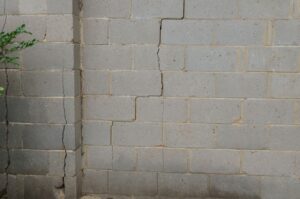How do you Fill Foundation Cracks?
 A foundation crack can be defined as a fracture or splitting the ground along the foundation line. This area is also known as “the dirt” or basement floor. There are three types of foundation cracks: Crack in the grade (foundation level), Crack that run perpendicular to the wall, and crack that run parallel to the wall.
A foundation crack can be defined as a fracture or splitting the ground along the foundation line. This area is also known as “the dirt” or basement floor. There are three types of foundation cracks: Crack in the grade (foundation level), Crack that run perpendicular to the wall, and crack that run parallel to the wall.
What causes foundation cracks?
Some of the most common causes for foundation cracks are settlement and erosion of soil surrounding the structure, which can cause cracks in walls, floors and ceilings. Building settlement can be caused by construction on soft ground, overloading buildings or having one structure built on top of another. Sometimes the soil around the foundation may shrink due to poor drainage, which would cause cracking.
Why is Foundation Cracks Dangerous
Some foundation cracks require no attention. Others will need professional intervention. If the foundation is cracked, but the cracks are not leaking or letting out air or water, they can be ignored safely. Most of these types of cracks are hairline fissures, which typically do not grow larger over time and pose no threat to the home’s structural integrity.
On the other hand, if cracks are wide and letting out water or air or the foundation is settling, more than just cosmetic repair work is required to fix your foundation degeneration permanently. If you’re experiencing this problem, it’s time to repair those cracks.
Ways to fill foundation cracks
There are many ways to fill foundation cracks, and each is suited for a different type and size of crack. Here we will discuss some most common and effective ways:
Let the experts repair it – An ordinary man can’t identify or fix a foundation crack himself, so leave this job to those who know how to do it.
Another option is to inject a self-levelling, cementitious material. This quick and economical process deposits a liquid polymer into the crack without excavation or mess. The liquid polymer mixes with soil particles to thicken as it dries, ultimately forming a continuous mass that can help fill large cracks.
Inject epoxy resin into the foundation crack. This works well for very small cracks that are no more than 1/8 inch wide. Begin by drilling holes on both sides of the crack to provide a connection with each other, then inject resin until it starts coming back out of the hole. The resin will flow into the gap between soil particles, creating a firm block to prevent water infiltration.
You or your contractor can consider some other ways before opting for or during the repair process. The choice can depend on the size, length and type of foundation crack and your budget.
What is not recommended?
Many products on the market claim to fill foundation cracks, but most of them are worthless and lack the elasticity of authentic concrete or mortar material. Also, some materials used in home foundations may need expansion and contraction, or they may shrink and crack themselves, creating more cracks. Foundation cracks only get worse over time, so try to keep them from getting any worse while you’re waiting for help.
Conclusion
In conclusion, it is difficult to determine the cause of foundation cracks. It will be best to let your foundation repair contractor determine the type and exact location of the crack that needs attention. They may offer suggestions on filling foundation cracks if they are not severe or recommend a different course of action.
Looking for a foundation crack repair contractor? contact us at:
Level Pro Foundation Repair Inc
920 Murphy Road,Suite D, Stafford, Tx 77477
Phone: (832) 894-0781
https://www.levelprofoundationrepair.com/

